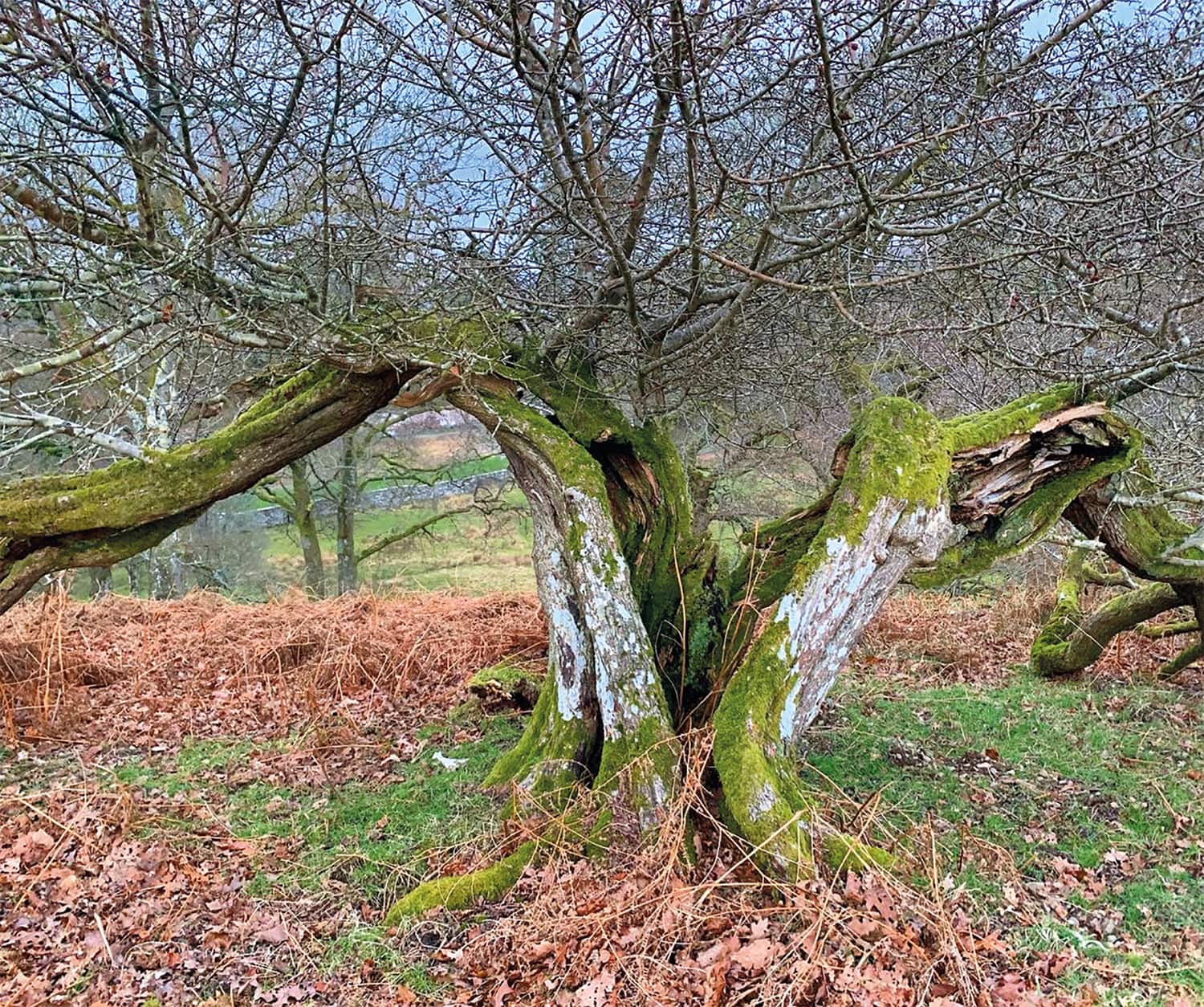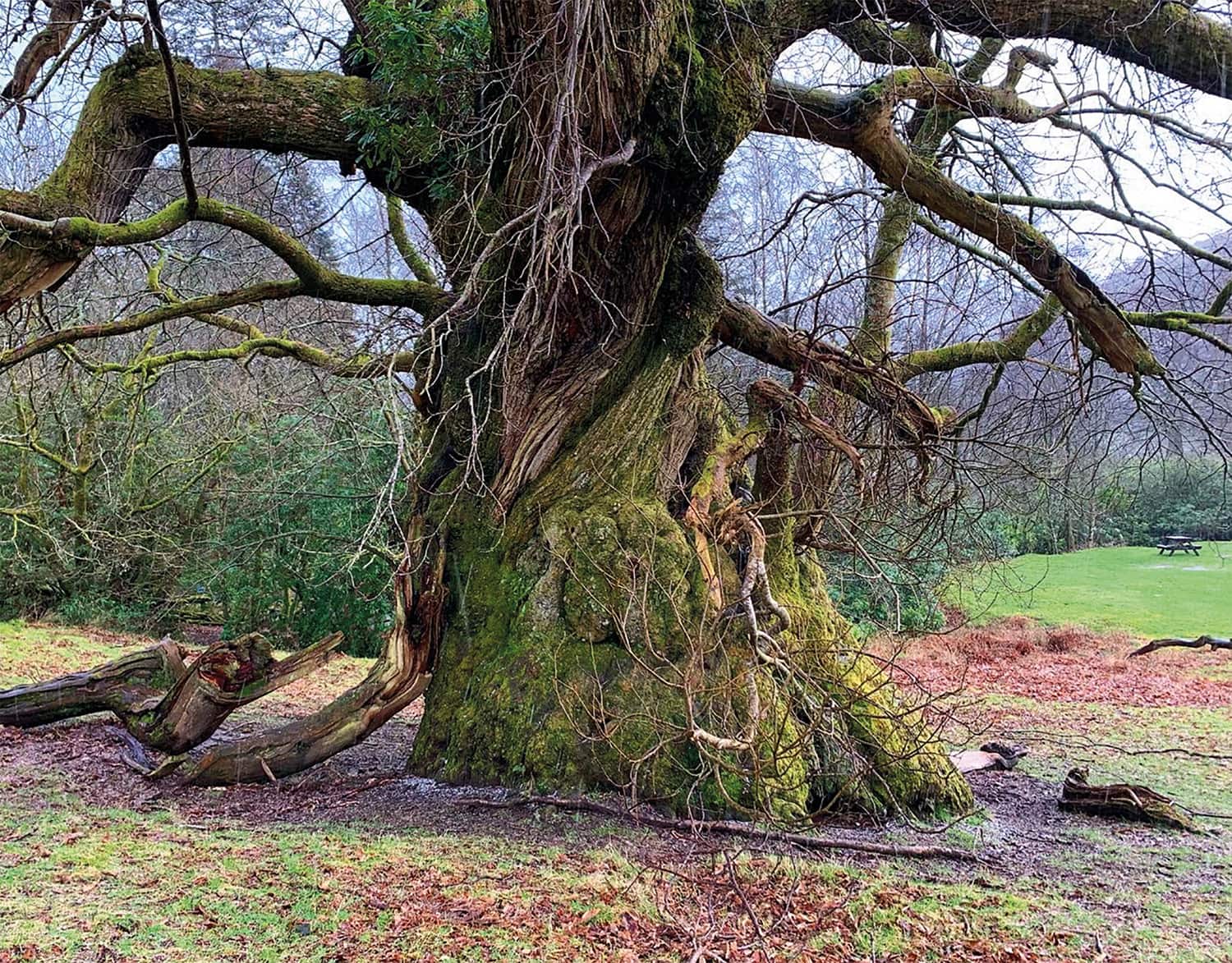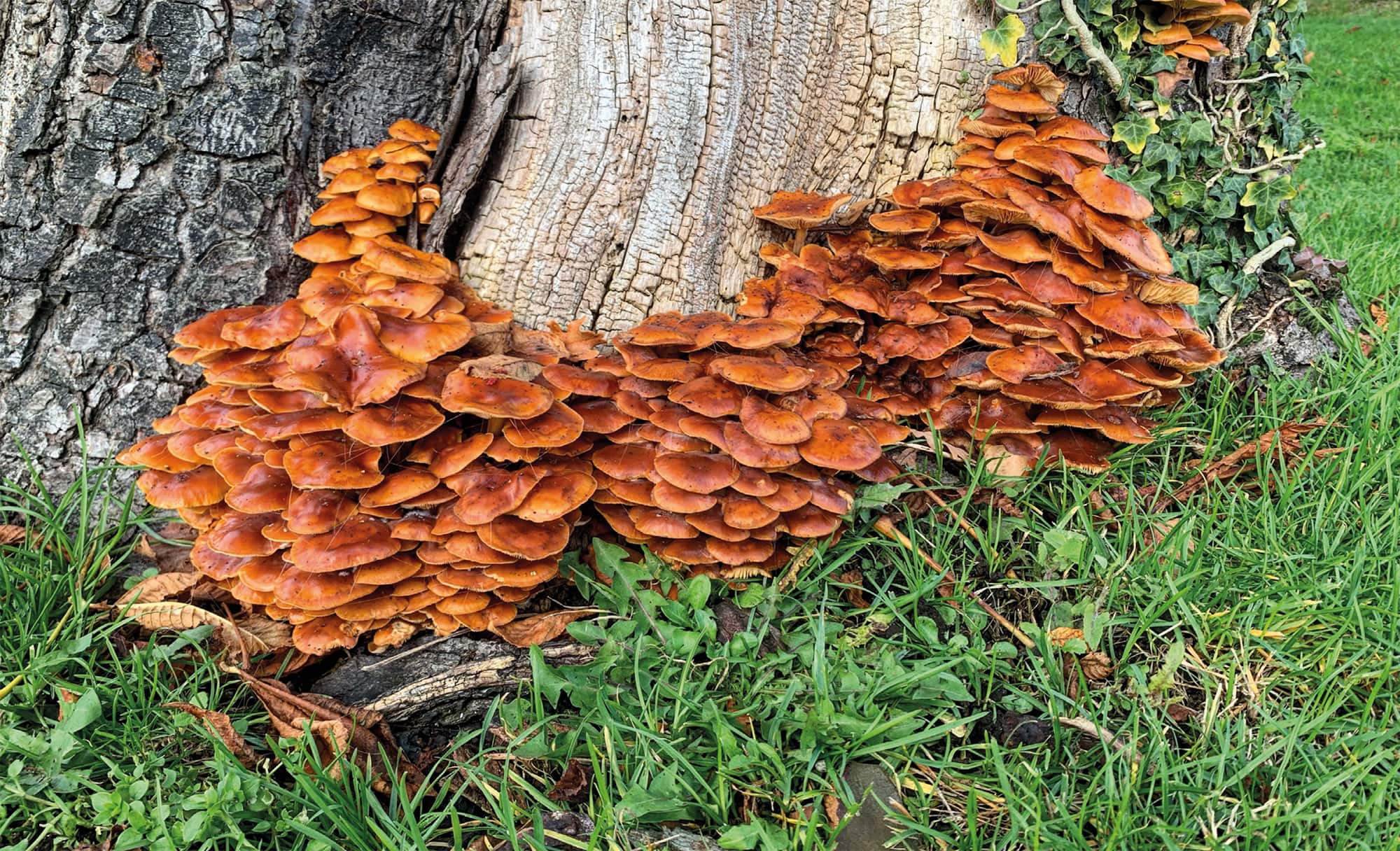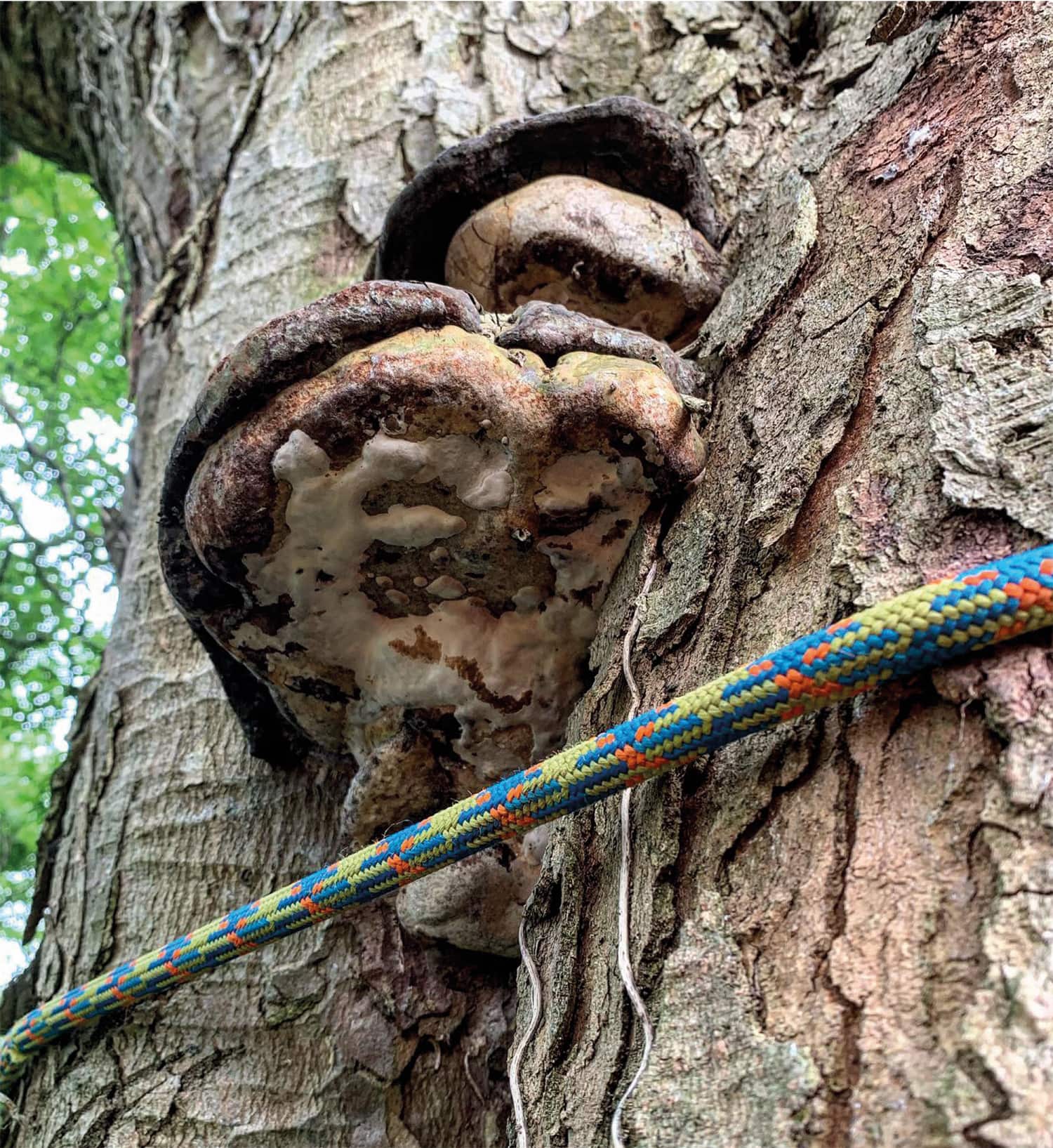A contractor’s approach to ensuring ancient and veteran tree continuity
A contractor’s approach
to ensuring ancient and veteran tree continuity
Tom Hamments
There exists a fundamental divide among ancient and veteran trees with regard to their history and how they became so.
On one side are the trees which have been left to their own devices, not worked by mankind historically or currently, nor heavily influenced by the intensive management of the surrounding area; their features are manifestations of completely natural processes and weather events. On the other side are trees which have been cut, pruned or otherwise altered for some purpose. These purposes vary, but can include to produce one-off or cyclic wood fuel or simply to create an access for farming or other reasons. I suspect the slight majority of ancient trees (defined by age for species) fall into the former category and the slight majority of veteran trees (defined by their individual features or other especially high value) fall into the latter category, but there are many examples of overlap.
Both natural ageing and human intervention can instigate similar physiological processes which create the features and characteristics we recognise in these trees (broadly speaking). Physiological processes caused by natural ageing tend to be in harmony and are, at some stage, accompanied by relative structural change; these processes complement each other and work to prolong the life of the tree. Physiological processes caused by human intervention are often abrupt changes that other parts of the tree were not ready for, nor necessarily needed. Typically, these cause a far quicker and more crude result and are not always conducive to longevity. When we consider the management of existing ancient and veteran trees – and of trees with the potential to become ancient or veteran – it is important to understand these processes, if only at a rudimentary level. Here is an overview of the difference between natural and induced tree system and structure changes.

Ancient sweet chestnut (home to an array of epiphytes: its own ecosystem!).

Ancient sweet chestnut (home to an array of epiphytes: its own ecosystem!).
Natural reduction of crown area (syn. retrenchment)
In maturity, shoot extension gradually decreases in a linear relationship with root performance, rhizosphere size and resource availability. Hydraulic resistance increases as a result of the natural filtration through narrowing xylemic pathways between successional terminal bud scars until such a point that hydraulic resistance is too much and the peripheries of the crown start to die back. Plant hormones (mainly auxin, cytokinin and ethylene) are then responsible for gradually rebalancing a root-to-shoot ratio, with a combination of the growth of dormant or adventitious buds into new shoots lower down the tree and the death of roots no longer required. Conversion of sapwood now surplus to requirements ensures the tree is servicing no more functional cells than it needs to, plus a contingency.
Induced reduction of crown area
When photosynthetic capacity is reduced by crown reduction, the tree system has fewer resources to do more work. The tree must sustain maintenance respiration of live tissue as a priority, as well as renewing xylem and phloem and producing flowers and seeds. On top of this, it must now compartmentalise and produce wound-wood, restore translocational pathways and protect itself from disadvantageous decay and occlude the wounds. The tree can seldom do this using energy being produced at the time (kinetic energy) and must rely on using energy stored in sapwood (potential energy) to overcome these hurdles. With many species of tree (and even genetic differences within the same species), the parameters of tolerance are small. If too much crown is removed, the tree may use up its stored energy before completing some or all of these processes. Wherever significant parts of the crown are removed, an amount of sapwood will die as it is no longer needed to service a smaller crown/root volume.
Natural fungal decay
Fungal decay in trees is entirely purposeful. A tree ageing in a natural way will have been converting sapwood to heartwood or ripewood as the inner circumference of sapwood becomes obsolete as a result of secondary growth. The tree does not need its whole cross-sections to be active; indeed, it could not sustain the maintenance respiration requirements of such a large area of live tissue. Fungal propagules exist latently in trees, and these propagules are able to activate and begin the decay process when conditions are right. This may be after they have been transferred into heartwood or ripewood or while they are in sapwood if areas of sapwood become dysfunctional in resource translocation (and therefore desiccate) as a result of crown loss or direct injury. When the decay process begins as a result of the retrenchment process, in the overwhelming majority of cases the rate of decay does not exceed the rate of retrenchment, i.e. the risk of structural failure from a reduction in stem volume is mitigated by a continual and gradual reduction in the forces applied there.
Induced fungal decay
When fungal decay is induced after (usually severe) pruning, it often has a much larger volume of wood available to it. Sapwood does not have the same chemical composition as heartwood: dysfunctional sapwood arising from an abruptly reduced demand for resource translocation is more vulnerable to colonisation and at a quicker rate. Fungal hyphae may then move readily into heartwood or ripewood (depending on the situation), and some species may work outwards from dysfunctional sapwood into functional sapwood where they may shut the tree system down (though most would preferentially degrade desiccated tissue first).
Moreover, where decay is onset after human intervention, the reduction in stem volume may not be mitigated by whatever pruning has already been done, and the tree could be more liable to failure going forward – particularly if decay has onset in a stem which hosts a crown proliferating growth to replace lost photosynthetic capacity!
Natural hollowing
While natural hollowing heavily overlaps with fungal decay, we can identify a common key difference in the way it occurs. When the crown of a tree retrenches naturally, it is still growing in girth (secondary growth). In order to perform secondary-growth functions, the tree requires energy produced by the crown and, of course, the water and nutrients needed to photosynthesise in the first place. This creates a conflict: girth increase vs. photosynthetic capacity decrease. In practice, this results in ever-decreasing annual rings of laid down wood, until the point where the laid down wood does not create a full ring. Cork cambium and therefore bark are not produced in that area, and an ingress into the structure is created. Heartwood or ripewood is then exposed, allowing the fungal propagules within it to activate and begin the hollowing process. Remember, at this stage retrenchment has been occurring in a steady fashion – natural hollowing is rarely a cause for concern of structural failure as, by now, the crown is small and forces on the structure are low. As the middle of the tree decays, valuable nutrients are available to the tree again. It is a perfect cycle which, in essence, is infinite.

Flammulina velutipes on horse chestnut.

Ganoderma australe on sycamore.
Induced hollowing
Where a vigorous tree continues to grow on a hollowing stem (typical species include Salix spp. and Populus spp.), failure is likely (if a limiting factor does not slow or halt crown growth). Most of us working in practical roles have, on more than one occasion, cleared failed lapsed willow pollards. The decay and subsequent hollowing process begin in earnest after the first pollarding. If the cycle is kept up, there may not be an issue, but if the pollard is left to lapse, the forces applied to the hollowing stem by a heavy crown often result in failure. This type of hollowing can be easily induced in any species when the crown of a functional unit is pruned – a functional unit being a tree within a tree: a part of the crown serves a part of the roots and vice versa, not requiring resources from other parts of the crown or roots respectively. This functional unit system may be efficient, but because it is utilising only a proportion of the circumference of sapwood, it is liable to be damaged when its associated crown is pruned or removed, even if the rest of the crown is left untouched. When this unit is shut down by severe pruning, we get vertical strips of dysfunction visible on the stem which can lead to hollowing. The risk of failure here is that the rest of the crown is possibly still growing …
Natural reduction of root area (syn. retrenchment)
As explained above, crown and root retrenchment are relative when they occur naturally. There is little risk to the physiological and structural condition of the tree if retrenchment of the roots is linear to retrenchment of the crown. Typically, the deeper and more vertical roots die off first; the shape of the rhizosphere of an older tree is usually shallower and wider than the wine-glass shape of the rhizosphere of a younger tree. Death of structural roots can be an instigator for fungi latent in the wood or soil to colonise and decay vertically into the root crown and subsequently the heartwood or ripewood of the tree, leading to hollowing with little or no open cavitation in the stem. This habitat is valuable where access exists via small branch cavities or through insect galleries etc.
Induced reduction of root area
One of the most prolific causes of tree death, particularly in ancient and veteran trees and those with the potential to become ancient or veteran, is human activity leading to root dysfunction. Compaction by vehicles, plant or footfall (including grazing animals) creates anaerobic conditions in the soil so roots cannot respire, renders water unable to penetrate or move within the rhizosphere, and inhibits root exploration. Mycorrhizal fungi are also negatively affected by damaged roots or a damaged rooting area. Because the vast majority of roots are in the top layers of soil, this can quickly cause a loss of available resources for the tree system. It is my opinion that fungi such as Armillaria mellea and Meripilus giganteus revel in such conditions, easily colonising or activating in desiccated roots. The tree system is weak from a lack of resources, and it cannot always respond adequately.
Aim to retain
This article is intended as an overview. There are many occasions when we will absolutely want to contradict the advice implied here. Indeed, there are occasions when we will actually want to cause some of the issues outlined above if the potential benefits outweigh the negative impacts. However, if we take time to understand a tree’s system, look at it in detail when deciding on management, assess its history, and think about whether we consider our observations to be features or defects, we will probably find ourselves making different judgements to those which spring to mind in the first few seconds of standing in front of it.
It is my belief, based on my experience, that there is a disadvantageous disparity between ideal work specifications (including doing nothing and planting!), which would help us maintain a sufficient level of ancient and veteran trees, and the work specifications which are actually administered, and this disparity hinders continuity. I think this is often a result of risk perception, client demands and/or financial gain (or loss). Many operators working in tree surgery roles began a career in this industry because they enjoy tree climbing and using power tools, as I did. These same operators are (in situations where there has been no input from a consultant) the same people deciding specifications of work to trees, and in doing so they are already balancing many factors which often come before consideration of whether the tree has current or potential ancient or veteran status and/or could be retained with tolerable risk. If every company in the UK retained one extra (suitable) tree per month, that would be a monumental benefit to our ancient and veteran stock in generations to come.
Subjects which I will leave for another article, such as local and higher-level policy frameworks and land use conducive to ageing trees, are also important factors consistent with ancient and veteran tree continuity. However, I hope that if you are a contractor making decisions about trees, you will find this article useful when deciding work specifications.

Tom Hamments leads ATF Gloucestershire and is Managing Director of ARB Approved Contractor Stockwell Davies Tree Contractors Ltd.
This article was taken form Issue 191 Winter 2020 of the ARB Magazine, which is available to view free to Arboricultural Association members by simply logging in to the website and viewing your profile area.

